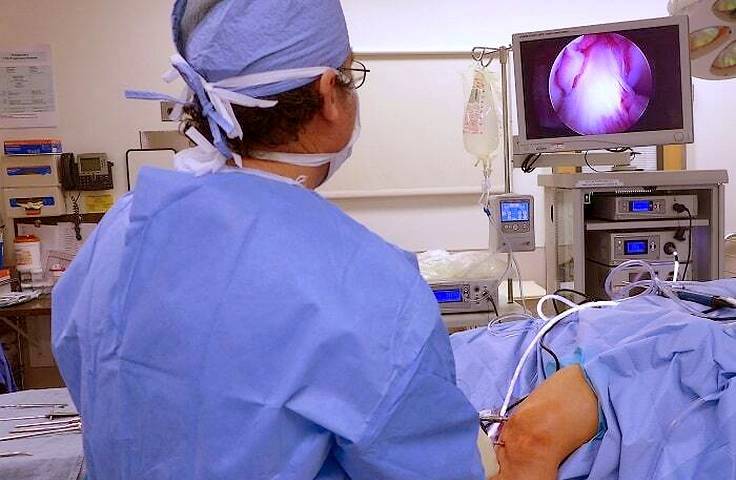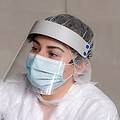
Arthroscopy, also known as keyhole surgery, is a safe, versatile technique for diagnosis and treatment of conditions affecting the knee. Only very small incisions are needed to make the "keyholes" (or "portals"), rather than open surgery.
A camera (arthroscope) is inserted into the knee through one portal, allowing the surgeon to inspect all areas of the joint. Structures such as cartilage discs (meniscus), ligaments and the joint surfaces can all be seen on a screen in magnified detail.
A second portal allows for the insertion of surgical instruments. They can be used to trim cartilage tears, smooth articular surfaces, remove loose bodies, or carry out more complex repair.
Reasons For Arthroscopy
Keyhole surgery can at times just be used for diagnostic reasons, although in most cases, the issue will already be known from imaging such as an MRI scan.
The approach is used following injury or in early arthritis, to treat mechanical symptoms due to loose bodies or meniscal tears. Other techniques can be carried out, such as chondroplasty (to smooth damaged lining cartilage), nanofracture, meniscal repair and the osteochondral autograft transplantation system (OATS).
Ligament repair may not require open surgery, with anterior cruciate ligaments and others able to be reconstructed using arthroscopy. Most soft tissues within the knee can be treated without a more invasive approach.
Recovering From Surgery
The procedure is usually performed under a full (general) anaesthetic and you will normally be discharged on the same day. A notable advantage of arthroscopy is less time lost to recovery, thanks to the minimally invasive nature of the surgery.
Complications can occur with any form of surgery, such as blood clots, or infection but in this case, they are rare. A speedy recovery is more likely and before you leave, a physiotherapist at our Northampton hospital will see you to assist.
Whether you are asked to attend the department, or carry out exercises at home will depend on your unique needs. Ongoing physiotherapy is however important, to see the maximum benefit from surgery.
You should be driving a car and back at work within a week or two and be feeling mostly back to normal a few weeks later. We want you to achieve the best possible outcome, building long term strength to match free movement.
![]()
Treating Supportive Tissues

Our knee is reliant on the ligaments which bind the joint together, to provide stability. Tears are not uncommon and arthroscopy can come to the rescue, as an ideal approach for:
